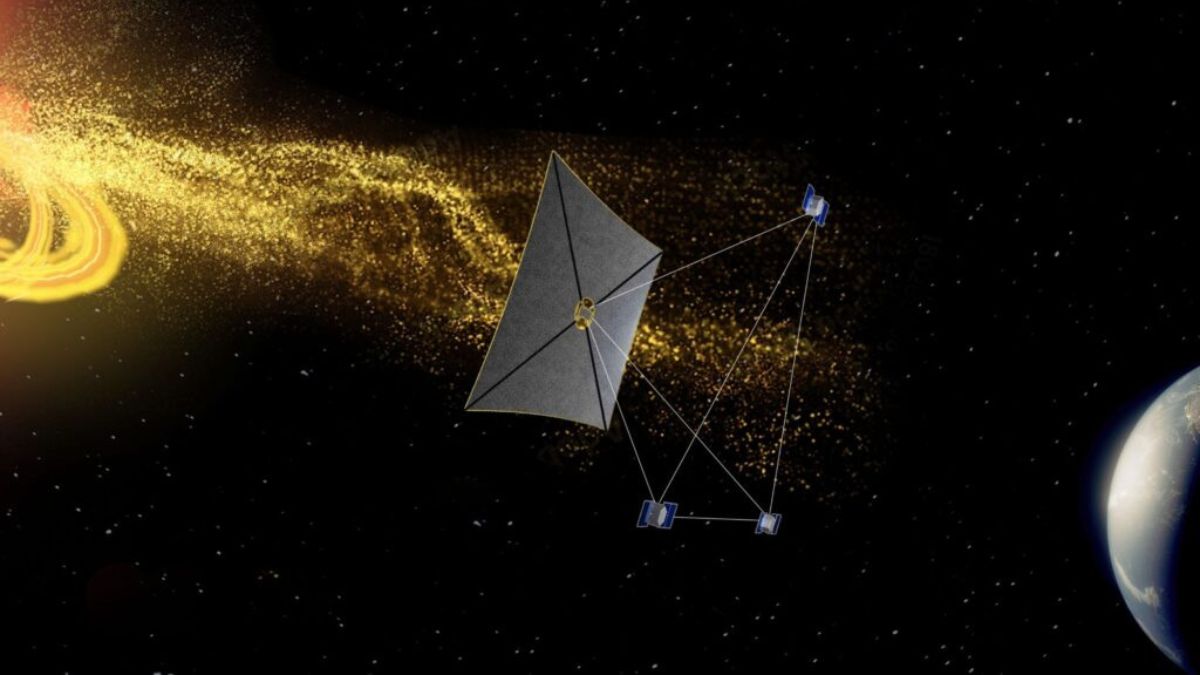Truth & Goodness
Renowned Fantasy Author: Only the Truth is Beautiful
17 December 2025

Scientists at NASA have uncovered a phenomenon that could fundamentally change the way we view solar storms. The latest simulations revealed cosmic tornadoes hidden within the solar wind—an invisible danger capable of paralyzing Earth in a matter of hours. The agency is now preparing an urgent defense plan against this threat, highlighting the critical importance of anticipating and mitigating the risks associated with a major NASA solar storm event.
Researchers at the University of Michigan have discovered something that may completely change our perspective on threats from space. In their latest computer simulation of a powerful plasma eruption on the Sun, they revealed a phenomenon no one expected: cosmic tornadoes, which are magnetic knots tearing away from solar eruptions.
These small but extremely strong structures can trigger geomagnetic storms capable of disrupting power grids, GPS systems, and satellite communication. “This is a real threat to Earth,” warns Professor Chip Manchester from NASA, the study’s author, as quoted by The Astrophysical Journal.
In May 2024, the world learned just how serious solar storms can be. A powerful geomagnetic storm paralyzed high-voltage lines, disrupted satellite orbits, and forced airplanes to change routes. Even navigation systems in tractors stopped working, and damages—according to NASA—reached billions of dollars. This is not a science fiction scenario, but a real warning: the Sun can hit harder than we think.
Geomagnetic storms occur when magnetic fields in the solar wind collide with the Earth’s magnetosphere. This hot bubble of plasma occasionally erupts from the Sun, carrying immense energy. The most dangerous events are the Coronal Mass Ejections (CMEs)—gigantic clouds of plasma speeding through space at millions of kilometers per hour. However, scientists warn that these spectacular phenomena are not the only danger; smaller, hidden cosmic tornadoes, which are difficult to detect in time, can be equally threatening.
The team from the University of Michigan discovered small but extremely dangerous magnetic knots in the solar wind—structures with a diameter of only 5–10 million kilometers. Previously, they were too small for standard CME models to detect, yet too large for particle simulations. Now, they have been captured for the first time.
The simulations showed that these cosmic tornadoes form when fast plasma ejections cut through slower solar wind—like a snowplow scattering swirling powder. Some of them dissipate, but others travel through space with increasing force, heading toward Earth. The only question is: can we detect them before it is too late?
“If threats are forming in the space between the Sun and Earth, we can’t just look at the Sun,” warns study co-author Mojtaba Akhavan-Tafti. “This is a matter of national security. We need to proactively find such structures heading toward Earth and predict what they will look like when they reach our planet.”
Currently, however, we detect similar anomalies using single probes pointed toward the Sun. Chip Manchester compares this situation to trying to monitor a hurricane with only one wind sensor. “You would see a change in readings, but not the whole storm structure,” says the researcher. This is exactly the situation Earth is in right now.
The solution is a novel constellation of four SWIFT (Space Weather Investigation Frontier) probes, developed under a NASA project led by Mojtaba Akhavan-Tafti. Three of them would form the base of a pyramid around the gravitational balance point between Earth and the Sun, and the fourth—placed closer to our star—would act as a “vertex sensor.”
Such a formation could provide a warning against dangerous space weather up to 40% faster than current systems. The development of this system is a key part of the current NASA solar storm defense initiative. However, there is one major problem: keeping that last probe so close to the Sun would require huge amounts of energy.
The greatest challenge proved to be the position of the fourth probe, located closest to the Sun. Maintaining it in a stable point would require enormous amounts of fuel to counteract the star’s gravity.
However, NASA engineers found an ingenious solution: as part of the Solar Cruiser mission, they developed an ultralight, aluminum solar sail with the surface area of a quarter of a soccer field. Thanks to the force of light, the probe could maintain its position without using a drop of fuel.
This is the solution researchers at the University of Michigan propose as part of the warning system against dangerous solar storms. Will we succeed in the future in creating an advanced fleet of four probes that will protect us from magnetic knots from the Sun? The entire effort to implement this system underscores how seriously NASA views the threat, making the NASA solar storm project a critical element of global preparedness.
Read this article in Polish: Odkryto ukryte zagrożenie ze Słońca. NASA szykuje plan obrony